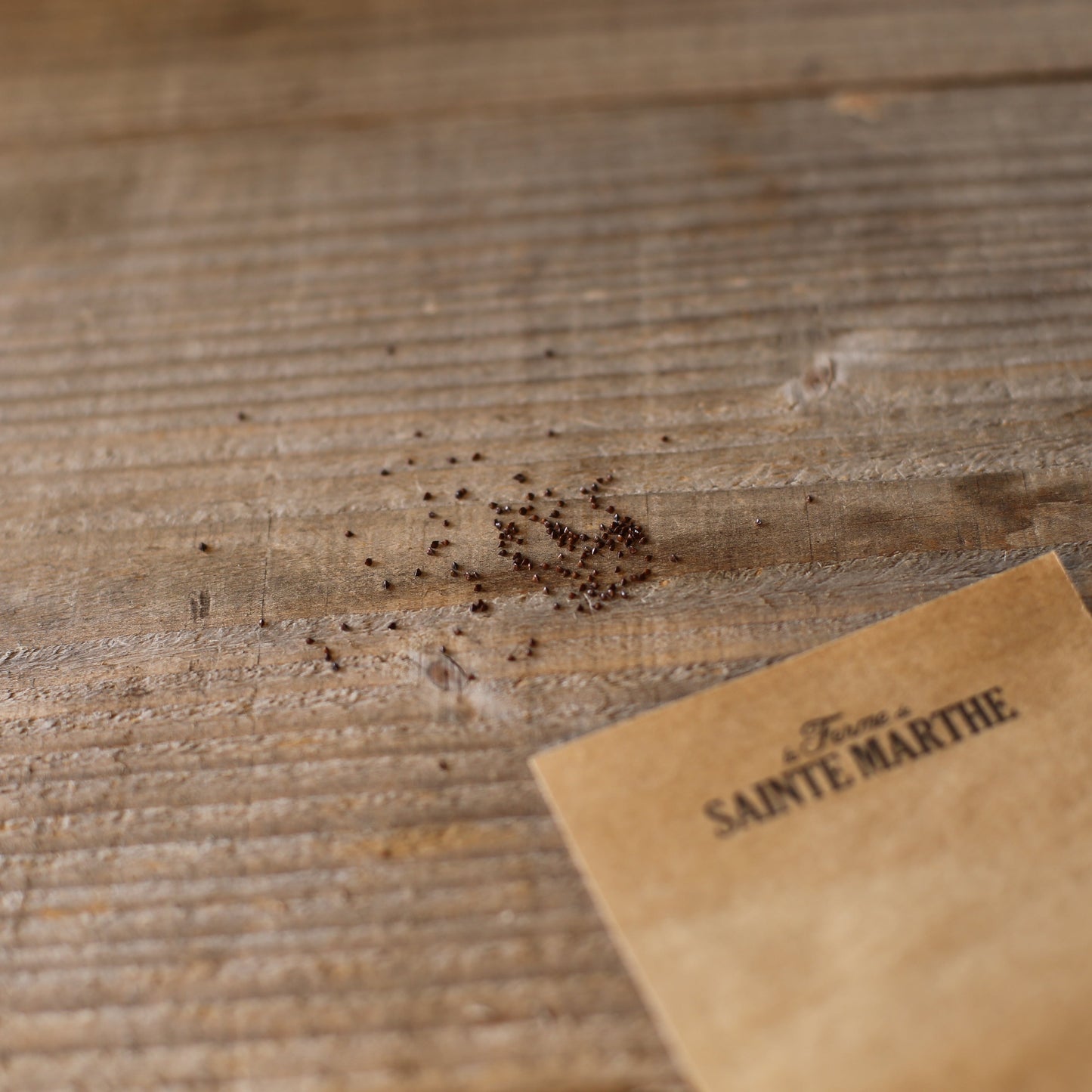BLOOD SORREL AB
Rumex sanguineus var. sanguineus
Blood sorrel is identifiable by the color of its leaves. It is the tangy foliage of this leafy vegetable that is eaten cooked (in soups or omelets) or simply in salads. This polygonaceae plant is grown in vegetable patches or as a condiment in the garden. It particularly likes light, fresh, and rich soils. It can grow in both sun and shade. Although it thrives in the ground, it can also be grown in pots on the terrace or balcony. It will be necessary to ensure that it is watered regularly and that compost is added during the annual repotting.
Successful Sowing of Blood Sorrel
Sow in seedbeds or pots from March to June. Cover the seeds with seed compost one to two times their thickness, firm down lightly, then water. Keep the soil moist throughout the germination period.
Sorrel cultivation
Transplant the plants in the garden when they have 4-5 leaves, spacing them 30 cm apart in light, humus-rich, fresh soil in a sunny location, or even partial shade during the summer. Once established, sorrel can remain in place for 4 or 5 years without any problem.
It is advisable to remove the flower stalks as soon as they appear to avoid exhausting the plant and prevent the spread of seeds. This will encourage the production of tender shoots. The leaves disappear in winter, but the sorrel starts growing again the following spring. Watch out for snails and slugs, which love sorrel leaves. Sorrel prefers the wet periods of spring and autumn, so remember to water at the base if the weather is dry.
Sorrel Harvest
The leaves can be harvested as needed by detaching the leaves from the base.









